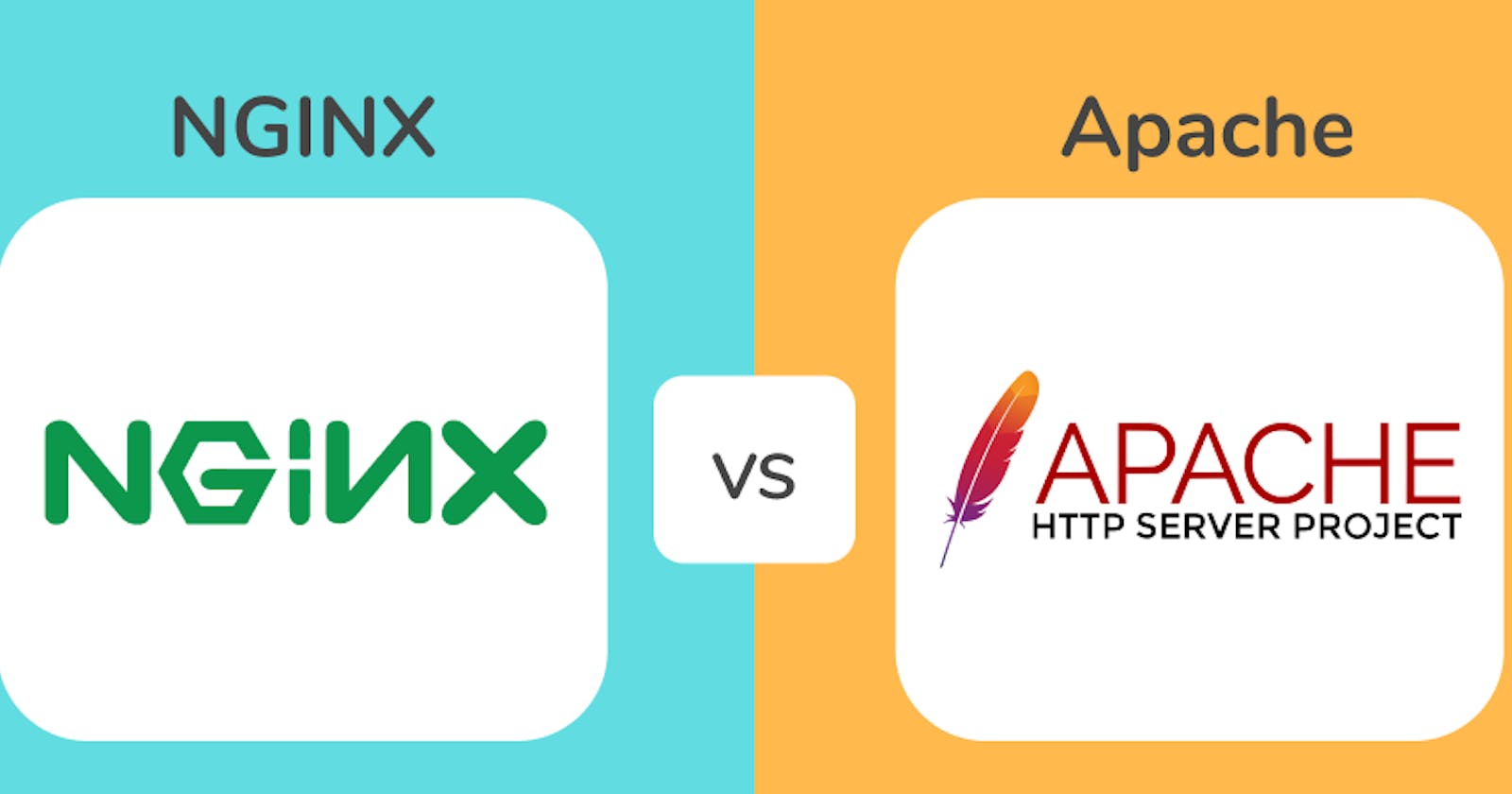Apache HTTP:
HTTP (HyperText Transfer Protocol) web server is a general term used to describe software that delivers web pages and other web content over the internet. Examples of HTTP web servers include Apache HTTP Server, Microsoft IIS (Internet Information Services), and lighttpd.
NGINX:
NGINX (pronounced "engine-x") is a popular open-source web server and reverse proxy server that has gained popularity in recent years due to its high performance, scalability, and low resource usage. In addition to serving static and dynamic content, NGINX can also act as a load balancer and a reverse proxy, which makes it a powerful tool for handling high traffic websites.
One of the main advantages of NGINX over other HTTP web servers is its ability to handle a large number of concurrent connections without using a lot of system resources. This is achieved through a unique architecture that allows NGINX to efficiently manage connections and handle requests in an event-driven, non-blocking manner. NGINX is also known for its ability to handle traffic spikes and perform well under heavy loads.
To sum up, both HTTP web servers and NGINX have their own strengths and weaknesses, and the choice between them will depend on the specific needs of your website or application. HTTP web servers are a more general-purpose solution that can handle a wide range of tasks, while NGINX is a specialized tool that excels at handling high traffic and high-performance websites
Document root:
The document root for an HTTP server running on a Linux system is the directory that contains the web content that will be served to clients when they request a web page from the server. The exact location of the document root may vary depending on the specific HTTP server software and the Linux distribution being used, but here are some common locations:
Apache HTTP Server: The document root for Apache on most Linux systems is /var/www/html/. This directory contains the main web content that will be served to clients.
NGINX: The document root for NGINX on most Linux systems is /usr/share/nginx/html/. This directory contains the default web content that will be served to clients.
Lighttpd: The document root for Lighttpd on most Linux systems is /var/www/htdocs/. This directory contains the main web content that will be served to clients.
It's worth noting that the document root directory may be configured to a different location depending on the specific setup of the HTTP server. To confirm the document root location for your specific HTTP server, you can consult the server's configuration file.
To install Apache HTTP Server (httpd) on a Linux server, follow these steps:
Open a terminal window and log in to your Linux server as the root user or a user with sudo privileges. Update the package list: sudo apt update (for Ubuntu/Debian) or sudo yum update (for CentOS/RHEL). Install the httpd package: sudo apt install apache2 (for Ubuntu/Debian) or sudo yum install httpd (for CentOS/RHEL). Once the installation is complete, start the Apache service: sudo systemctl start apache2 (for Ubuntu/Debian) or sudo systemctl start httpd (for CentOS/RHEL). You can also enable the Apache service to start automatically at boot: sudo systemctl enable apache2 (for Ubuntu/Debian) or sudo systemctl enable httpd (for CentOS/RHEL). Verify that Apache is running by opening a web browser and navigating to your server's IP address or domain name.
To install NGINX on a Linux server, follow these steps:
Open a terminal window and log in to your Linux server as the root user or a user with sudo privileges. Update the package list: sudo apt update (for Ubuntu/Debian) or sudo yum update (for CentOS/RHEL).
Install the nginx package: sudo apt install nginx (for Ubuntu/Debian)
or
sudo yum install nginx (for CentOS/RHEL).
Once the installation is complete, start the NGINX service:
sudo systemctl start nginx
You can also enable the NGINX service to start automatically at boot:
sudo systemctl enable nginx
Verify that NGINX is running by opening a web browser and navigating to your server's IP address or domain name. These steps are for a basic installation of httpd and NGINX. For more advanced configurations, please refer to the official documentation of each software.
Statistics and benefits:
NGINX is a popular web server and a reverse proxy server that is widely used to serve content and handle web traffic for many websites and applications.
Here are some statistics about NGINX that illustrate its popularity and effectiveness:
Market Share: NGINX is the second most popular web server software in the world after Apache, with a market share of around 25% according to Netcraft's March 2023 Web Server Survey.
Performance: NGINX is known for its high performance and low resource usage. It can handle a large number of concurrent connections with low memory and CPU usage, which makes it a good choice for high-traffic websites.
Scalability: NGINX is highly scalable and can be easily deployed in a distributed environment to handle large amounts of traffic. It can also act as a load balancer and reverse proxy, which makes it an ideal choice for handling complex web architectures.
Security: NGINX includes several security features that help protect websites and applications from attacks. These features include rate limiting, SSL/TLS termination, and access control.
Ease of Use: NGINX is easy to configure and manage, with a simple and intuitive configuration file syntax that is easy to understand.
Open Source: NGINX is an open-source project, which means that it is free to use, modify, and distribute under the terms of the BSD license.
In essence, NGINX is a powerful and versatile web server and reverse proxy server that is widely used in the industry. Its high performance, scalability, and ease of use make it a popular choice for many websites and applications.
